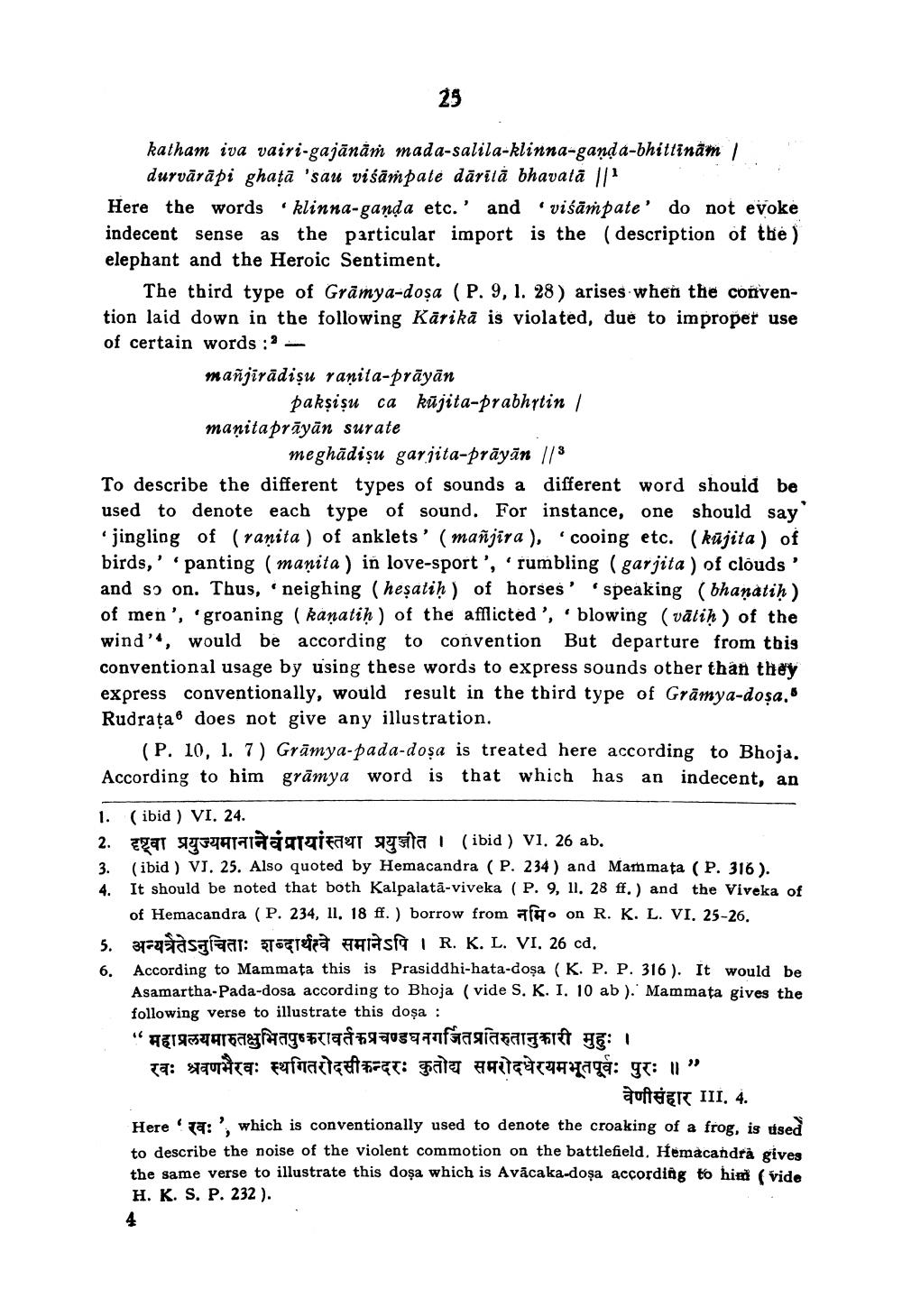________________ 25 katham iva vairi-gajanam mada-salila-klinna-ganda-bhittinam " durvarapi ghata 'sau visampate darita bhavata 1/1 Here the words * klinna-ganda etc.' and visampate' do not evoke indecent sense as the particular import is the description of the ) elephant and the Heroic Sentiment. The third type of Gramya-dosa (P. 9, 1. 28) arises when the convention laid down in the following Karika is violated, due to improper use of certain words :manjiradisu ranita-prayan paksisu ca kujita-prabhytin / manitaprayan surate meghadisu garjita-prayan 1/3 To describe the different types of sounds a different word should be used to denote each type of sound. For instance, one should say jingling of (raaita ) of anklets' (manjira ), 'cooing etc. (kujita) of birds,' 'panting (manita) in love-sport', 'rumbling (garjita) of clouds' and so on. Thus, neighing (hesatih) of horses' speaking (bhanatih) of men', 'groaning (kanatih ) of the afflicted', blowing (vatih) of the wind', would be according to convention But departure from tbis conventional usage by using these words to express sounds other than they express conventionally, would result in the third type of Gramya-dosa. Rudrata does not give any illustration. (P. 10, 1. 7) Gramya-pada-dosa is treated here according to Bhoja. According to him gramya word is that which has an indecent, an 1. (ibid ) VI. 24. 2. rar granata TOIFE gata 1 (ibid) vi. 26 ab. 3. (ibid) VI. 25. Also quoted by Hemacandra (P. 234 ) and Mammata (P. 316 ). 4. It should be noted that both Kalpalata-viveka (P. 9, 11. 28 ff.) and the Viveka of of Hemacandra (P. 234, 11. 18 ff.) borrow from afno on R. K. L. VI. 25-26. kasafar: Torreta las | R. K. L. VI. 26 cd. According to Mammata this is Prasiddhi-hata-dosa (K P. P. 316 ). It would be Asamartha-pada-dosa according to Bhoja (vide S. K. I. 10 ab ). Mammata gives the following verse to illustrate this dosa : "महाप्रलयमारुतक्षुभितपुष्करावर्तकप्रचण्डघनगर्जितप्रतिरुतानुकारी मुहुः / रवः श्रवणभैरवः स्थगितरोदसीकन्दरः कुतोद्य समरोदधेरयमभूतपूर्वः पुरः // " authIT III. 4. Here 'a:', which is conventionally used to denote the croaking of a frog, is dsed to describe the noise of the violent commotion on the battlefield, Hemacandra gives the same verse to illustrate this dosa which is Avaca ka-dosa according to hird (vide H. K. S. P. 232 ).




